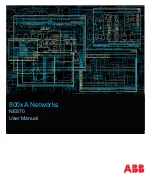
338
Portal web server: Not configured
Authentication domain: Not configured
Pre-auth policy: Not configured
User-dhcp-only: Disabled
Pre-auth IP pool: Not configured
Max Portal users: Not configured
Bas-ipv6: Not configured
User detection: Not configured
Action for server detection:
Server type Server name Action
-- -- --
Layer3 source network:
IP address Prefix length
Destination authenticate subnet:
IP address Prefix length
A user can perform portal authentication by using the H3C iNode client or through a Web browser.
Before passing the authentication, the user can access only the authentication page
http://192.168.0.111:8080/portal
. All Web requests from the user will be redirected to the
authentication page. After passing the authentication, the user can access other network resources.
# After the user passes authentication, use the following command to display information about the
portal user.
[Router] display portal user interface gigabitethernet 1/0/2
Total portal users: 1
Username: abc
Portal server: newpt
State: Online
VPN instance: N/A
MAC IP VLAN Interface
0015-e9a6-7cfe 2.2.2.2 -- GigabitEthernet1/0/2
Authorization information:
DHCP IP pool: N/A
User profile: N/A
Session group profile: N/A
ACL: N/A
Inbound CAR: N/A
Outbound CAR: N/A
Inbound priority: N/A
Outbound priority: N/A
Example: Configuring re-DHCP portal authentication
Network configuration
As shown in
, the host is directly connected to the router (the access device). The host
obtains an IP address through the DHCP server. A portal server acts as both a portal authentication
server and a portal Web server. A RADIUS server acts as the authentication/accounting server.
Configure re-DHCP portal authentication. Before passing the authentication, the host is assigned a
private IP address. After passing the authentication, the host gets a public IP address and can
access network resources.
















































